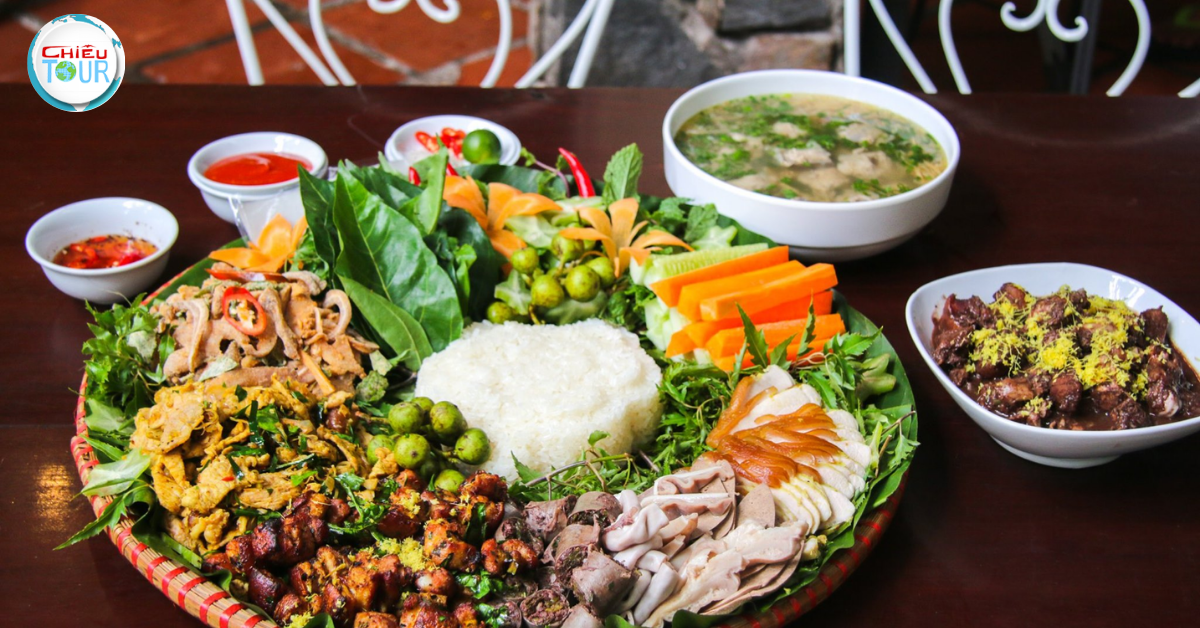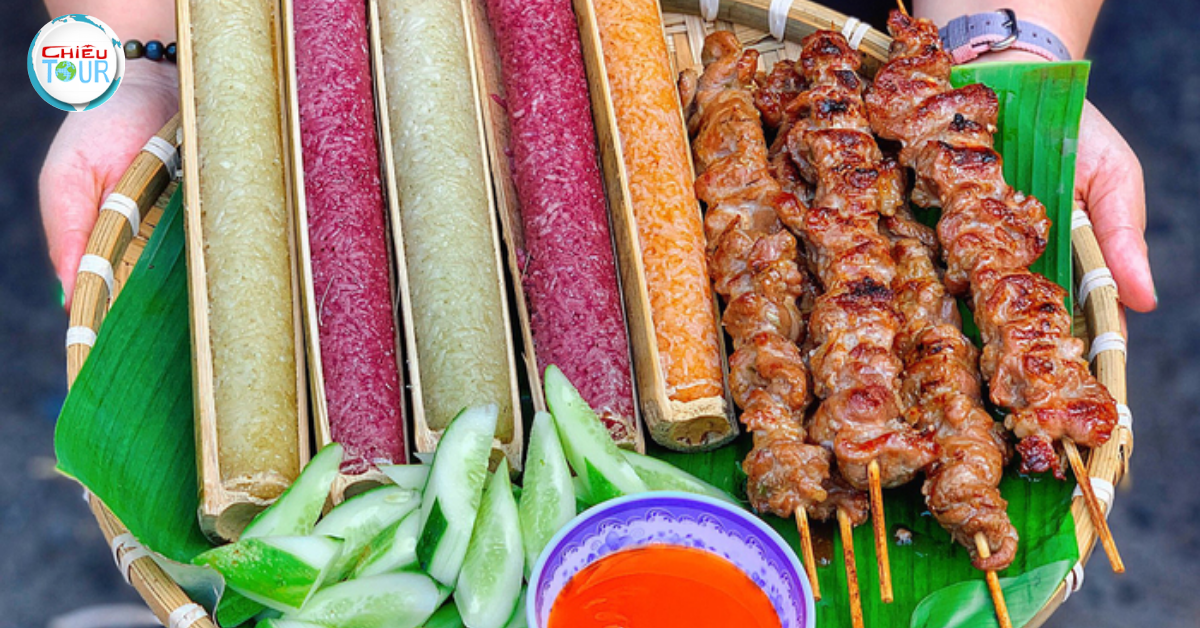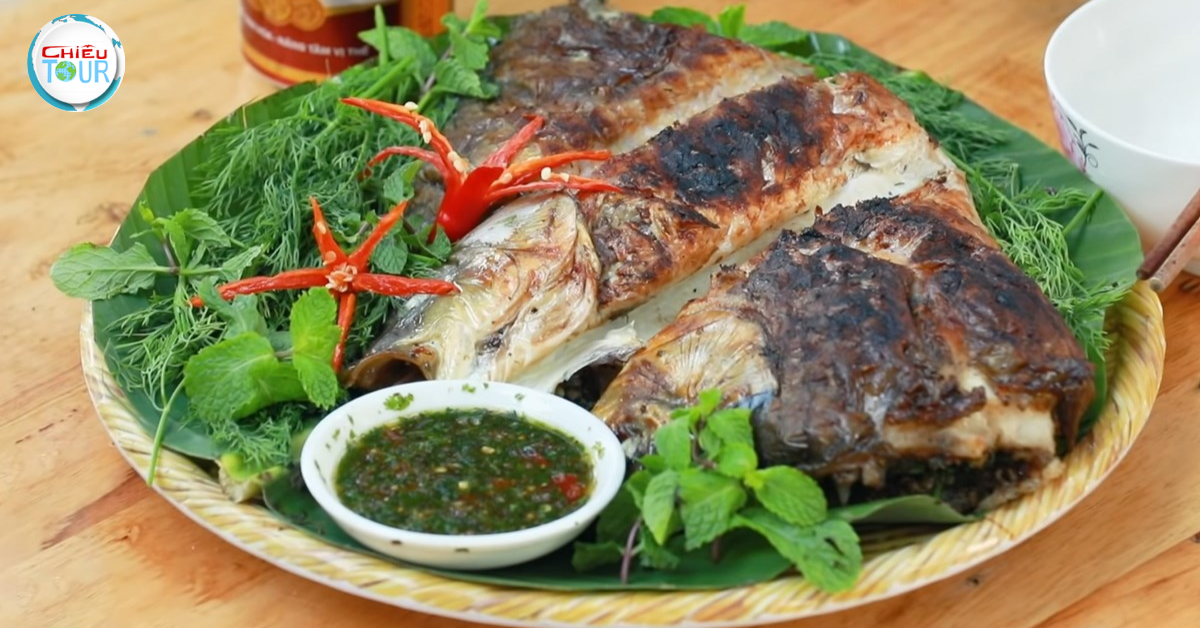Explore the Cuisine of Vietnam's Northwestern Highlands
- Author: Admin
- | Travel news
The Northwestern Highlands of Vietnam are not just renowned for their breathtaking landscapes, majestic mountains, and terraced rice fields; they are also home to a unique and vibrant culinary tradition. The cuisine of this region reflects the diversity of its ethnic communities, with each dish telling a story of history, culture, and the deep connection between people and nature.
A Culinary Journey Through the Northwestern Highlands
The Northwestern Highlands cover provinces such as Lai Chau, Son La, Dien Bien, and Lao Cai. These regions are home to various ethnic groups, including the Hmong, Thai, Tay, and Dao, each contributing distinct flavors and cooking techniques to the local cuisine. The dishes here are characterized by their use of fresh ingredients, foraged herbs, and unique preservation methods, often influenced by the mountainous terrain and cold climate.

Staple Ingredients of Northwestern Cuisine
The cuisine of the Northwestern Highlands is deeply tied to nature. Local ingredients such as bamboo shoots, wild mushrooms, freshwater fish, and forest vegetables play an essential role. Sticky rice, or xoi, is a staple food and comes in various forms, from steamed to dyed colorful versions using natural ingredients like leaves and flowers.
Meat, particularly pork and buffalo, is often preserved through smoking or fermenting, allowing people to store food for long periods in the mountainous climate. One notable example is thit trau gac bep (smoked buffalo meat), a delicacy known for its smoky aroma and chewy texture.
Signature Dishes of the Region
1. Thang Co (Horse Meat Stew)
Thang Co is a traditional dish of the Hmong people, often cooked during festivals and market gatherings. Made from horse meat, organs, and bones, this stew is seasoned with a unique blend of spices, including cardamom, cinnamon, and star anise. While it may not suit everyone's taste, it remains a cultural icon of the Northwestern Highlands.

2. Com Lam (Bamboo Sticky Rice)
Com Lam is a popular dish in the highlands, made by cooking sticky rice inside bamboo tubes. The rice absorbs the fragrance of the bamboo, resulting in a unique aroma and flavor. It is often paired with grilled meat or salted sesame.

3. Pa Pinh Top (Grilled Fish)
This Thai ethnic dish involves marinating freshwater fish with herbs, garlic, and chili before grilling it over an open fire. The result is a flavorful and aromatic dish that perfectly captures the essence of Northwestern cuisine.

4. Men Men (Steamed Cornmeal)
A traditional Hmong dish, Men Men is made from steamed ground corn. It is a common staple in regions where rice cultivation is limited due to the altitude.

The Role of Herbs and Spices
Herbs and spices are at the heart of Northwestern cuisine. Indigenous herbs like mac khen (a type of wild pepper) and doi seeds are frequently used to season meats and soups. These unique spices provide a distinctive flavor profile that sets Northwestern dishes apart from other Vietnamese regional cuisines.
The Social and Cultural Significance of Food
In the Northwestern Highlands, food is not merely a source of sustenance but a reflection of culture and social bonds. Communal meals are a cornerstone of life, especially during festivals and celebrations. Sharing food signifies friendship, unity, and hospitality.
Traditional markets, such as the Bac Ha Market in Lao Cai or the Sin Ho Market in Lai Chau, serve as vital hubs where locals gather to trade ingredients, share recipes, and celebrate their culinary heritage.
The Influence of Geography and Climate
The rugged terrain and cooler climate of the Northwestern Highlands have greatly influenced the region's cuisine. Ingredients that can be preserved, such as dried meats and pickled vegetables, are commonly prepared to last through the colder months. Seasonal foraging also plays a significant role, with dishes often reflecting what nature has to offer during different times of the year.
Festivals and Food Traditions
Festivals in the Northwestern Highlands are deeply intertwined with food. For example, during the Lunar New Year (Tet), locals prepare sticky rice cakes and other traditional delicacies. Festivals also provide an opportunity for families and friends to gather, cook, and share large meals.
Sustainability and Traditional Cooking Techniques
The people of the Northwestern Highlands have long practiced sustainable cooking methods. Ingredients are often foraged or locally sourced, and waste is minimized. Cooking techniques, such as smoking, fermenting, and steaming, not only preserve food but also enhance its flavor naturally.
Exploring the Cuisine as a Tourist
For travelers, exploring the cuisine of the Northwestern Highlands is an adventure in itself. Visitors can participate in cooking classes, dine with local families, and explore bustling markets to taste regional specialties.
Conclusion
The cuisine of Vietnam's Northwestern Highlands is a treasure trove of flavors, traditions, and cultural significance. From smoky buffalo meat to fragrant bamboo sticky rice, every dish offers a window into the lives and stories of the people who call this region home. For food enthusiasts and travelers alike, a culinary journey through the Northwestern Highlands is an unforgettable experience.
 Vietnam
Vietnam 


.png)


